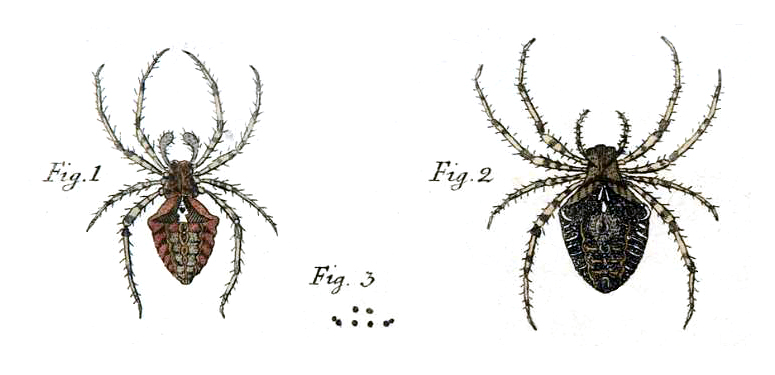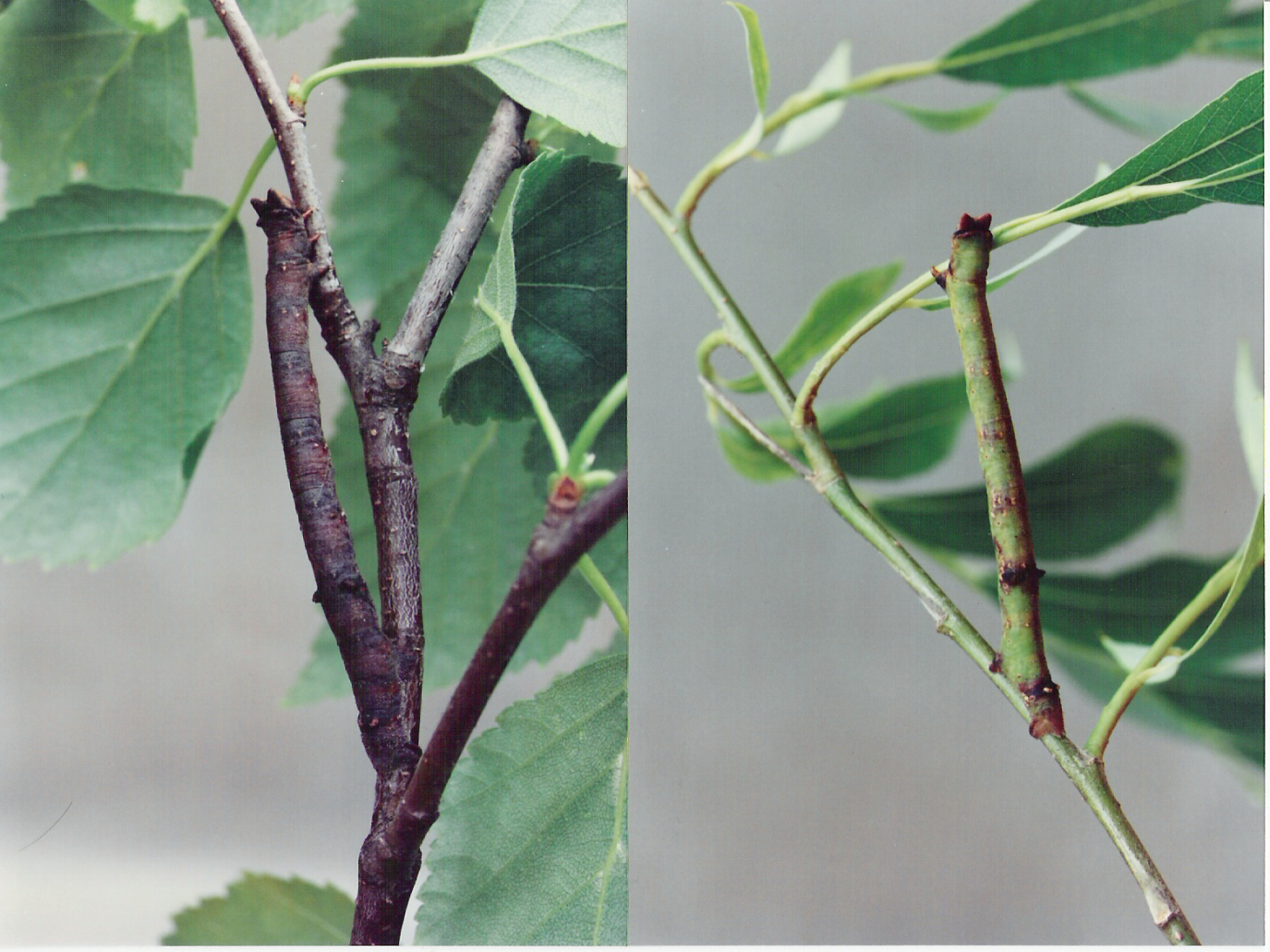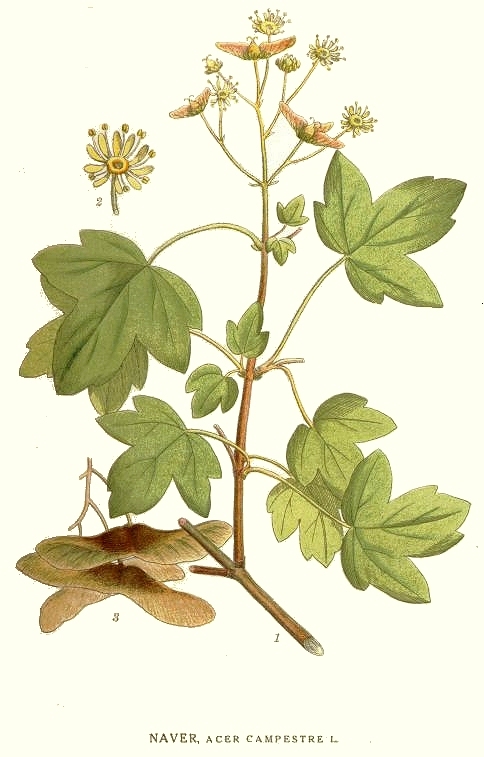|
Mottled Umber
The mottled umber (''Erannis defoliaria'') is a moth of the family Geometridae. It is common throughout much of the Palearctic region. The species was first described by Carl Alexander Clerck in 1759. Distribution The species can be found in western Europe from northern Scandinavia to the Mediterranean, then east to the Caucasus, northern Iran, Russia, Russian Far East, and Ussuri. Description The female of this species is wingless and rather spider-like and can be found on the trunks and stems of its larval food plants. She is white or yellow-and-black patched. The male is fully winged (wingspan 40–45 mm) and very variable. The ground colour of the forewing is pale yellow or light yellow ochre and suffused dark grey. The basal and distal fasciae are dark brown. The basal fascia is bordered on the inner side by a brown cloud; the distal fascia has a brown cloud on the outer edge. There is also a brown cloud along the costa. There are two dark brown oblong spots in the upp ... [...More Info...] [...Related Items...] OR: [Wikipedia] [Google] [Baidu] |
Carl Alexander Clerck
Carl Alexander Clerck (1709 – 22 July 1765) was a Sweden, Swedish entomologist and arachnology, arachnologist. Clerck came from a family in the petty Swedish nobility, nobility and entered the University of Uppsala in 1726. Little is known of his studies; although a contemporary of Carl Linnaeus, Linnaeus, it is unknown whether he had any contact with him during his time in Uppsala. His limited means forced him to leave university early and enter into government service, later ending up working in the administration of the City of Stockholm. His interest in natural history appears to have come at a more mature age, influenced by a lecture of Linnaeus he attended in Stockholm in 1739. In the following years he collected and categorized many spiders, published together with more general observations on the morphology and behaviour of spiders, in his ''Svenska Spindlar'' ("Swedish spiders", 1757, also known by its Latin subtitle, ''Aranei Suecici''). He also started the publication ... [...More Info...] [...Related Items...] OR: [Wikipedia] [Google] [Baidu] |
Peppered Moth
The peppered moth (''Biston betularia'') is a temperate species of night-flying moth. It is mostly found in the northern hemisphere in places like Asia, Europe and North America. Peppered moth evolution is an example of population genetics and natural selection. The caterpillars of the peppered moth not only mimic the form but also the colour of a twig. Recent research indicates that the caterpillars can sense the twig's colour with their skin and match their body colour to the background to protect themselves from predators. Description The wingspan ranges from 45 mm to 62 mm (median 55 mm). It is relatively stout-bodied, with forewings relatively narrow-elongate. The wings are white, "peppered" with black, and with more-or-less distinct cross lines, also black. These transverse wing lines and "peppered" maculation (spotting) can also, in rare instances, be gray or brown; the spotting pattern, in particularly very rare cases, is sometimes a combination of b ... [...More Info...] [...Related Items...] OR: [Wikipedia] [Google] [Baidu] |
Crataegus Laevigata
''Crataegus laevigata'', known as the Midland hawthorn, English hawthorn, woodland hawthorn, or mayflower, is a species of hawthorn native to western and central Europe, from Great Britain (where it is typically found in ancient woodland and old hedgerows) and Spain east to the Czech Republic and Hungary. It is also present in North Africa. The species name is sometimes spelt ''C. levigata'', but the original orthography is ''C. lævigata''. Description It is a large shrub or small tree growing to or rarely to tall, with a dense crown. The leaves are long and broad, with two or three shallow, forward-pointing lobes on each side of the leaf. The hermaphrodite flowers are produced in corymbs of 6 to 12, each flower with five white or pale pink petals and two or sometimes three styles. The flowers are pollinated by insects. The fruit is a dark red pome diameter, slightly broader than long, containing two or three nutlets. It is distinguished from the closely related common ... [...More Info...] [...Related Items...] OR: [Wikipedia] [Google] [Baidu] |
Acer Campestre
''Acer campestre'', known as the field maple, is a flowering plant species in the family Sapindaceae. It is native to much of continental Europe, Britain, southwest Asia from Turkey to the Caucasus, and north Africa in the Atlas Mountains. It has been widely planted, and is introduced outside its native range in Europe and areas of USA and Western Australia with suitable climate. Description It is a deciduous tree reaching tall, with a trunk up to in diameter, with finely fissured, often somewhat corky bark. The shoots are brown, with dark brown winter buds. The leaves are in opposite pairs, long (including the petiole) and broad, with five blunt, rounded lobes with a smooth margin. Usually monoecious, the flowers are produced in spring at the same time as the leaves open, yellow-green, in erect clusters across, and are insect-pollinated. The fruit is a samara with two winged achenes aligned at 180°, each achene is wide, flat, with a wing. The two varieties, not accept ... [...More Info...] [...Related Items...] OR: [Wikipedia] [Google] [Baidu] |
Ulmus
Elms are deciduous and semi-deciduous trees comprising the flowering plant genus ''Ulmus'' in the plant family Ulmaceae. They are distributed over most of the Northern Hemisphere, inhabiting the temperate and tropical-montane regions of North America and Eurasia, presently ranging southward in the Middle East to Lebanon and Israel,Flora of Israel OnlineUlmus minor Mill. , Flora of Israel Online accessdate: July 28, 2020 and across the Equator in the Far East into Indonesia.Fu, L., Xin, Y. & Whittemore, A. (2002). Ulmaceae, in Wu, Z. & Raven, P. (eds) Flora of China'', Vol. 5 (Ulmaceae through Basellaceae). Science Press, Beijing, and Missouri Botanical Garden Press, St. Louis, US. Elms are components of many kinds of natural forests. Moreover, during the 19th and early 20th centuries, many species and cultivars were also planted as ornamental street, garden, and park trees in Europe, North America, and parts of the Southern Hemisphere, notably Australasia. Some individual ... [...More Info...] [...Related Items...] OR: [Wikipedia] [Google] [Baidu] |
Rosa Canina
''Rosa canina'', commonly known as the dog rose, is a variable climbing, wild rose species native to Europe, northwest Africa, and western Asia. Description The dog rose is a deciduous shrub normally ranging in height from , though sometimes it can scramble higher into the crowns of taller trees. Its stems are covered with small, sharp, hooked prickles, which aid it in climbing. The leaves are pinnate, with 5–7 leaflets. Leaves have a delicious fragrance, when bruised. The dog rose blooms from June to July, with sweet scented flowers which are usually pale pink, but can vary between a deep pink and white. They are in diameter with five petals. As other roses it has a quintuscial aestivation (see sketch A in diagram). Unusually though of its five sepals, when viewed from underneath two are whiskered on both sides, two are quite smooth and one is whiskered (or bearded) on one side only. Flowers mature into an oval, , red-orange hip. The dog rose is hardy to zone 3 in the U ... [...More Info...] [...Related Items...] OR: [Wikipedia] [Google] [Baidu] |
Prunus Spinosa
''Prunus spinosa'', called blackthorn or sloe, is a species of flowering plant in the rose family Rosaceae. The species is native to Europe, western Asia, and regionally in northwest Africa. It is locally naturalized in New Zealand, Tasmania, and the Pacific Northwest and New England regions of the United States. The fruits are used to make sloe gin in Britain and patxaran in Spain. The wood is used to make walking sticks, including the Irish shillelagh. Description ''Prunus spinosa'' is a large deciduous shrub or small tree growing to tall, with blackish bark and dense, stiff, spiny branches. The leaves are oval, long and broad, with a serrated margin. The flowers are about in diameter, with five creamy-white petals; they are produced shortly before the leaves in early spring, and are hermaphroditic, and insect-pollinated. The fruit, called a "sloe", is a drupe in diameter, black with a purple-blue waxy bloom, ripening in autumn and traditionally harvested – at lea ... [...More Info...] [...Related Items...] OR: [Wikipedia] [Google] [Baidu] |
Betula Pubescens
''Betula pubescens'' (syn. ''Betula alba''), commonly known as downy birch and also as moor birch, white birch, European white birch or hairy birch, is a species of deciduous tree, native and abundant throughout northern Europe and northern Asia, growing farther north than any other broadleaf tree. It is closely related to, and often confused with, the silver birch (''B. pendula''), but grows in wetter places with heavier soils and poorer drainage; smaller trees can also be confused with the dwarf birch (''B. nana''). Six varieties are recognised and it hybridises with the silver and dwarf birches. A number of cultivars have been developed but many are no longer in cultivation. The larva of the autumnal moth (''Epirrita autumnata'') feeds on the foliage and in some years, large areas of birch forest can be defoliated by this insect. Many fungi are associated with the tree and certain pathogenic fungi are the causal agents of birch dieback disease. The tree is a pioneer species ... [...More Info...] [...Related Items...] OR: [Wikipedia] [Google] [Baidu] |
Betula Pendula
''Betula pendula'', commonly known as silver birch, warty birch, European white birch, or East Asian white birch, is a species of tree in the family Betulaceae, native to Europe and parts of Asia, though in southern Europe, it is only found at higher altitudes. Its range extends into Siberia, China, and southwest Asia in the mountains of northern Turkey, the Caucasus, and northern Iran. It has been introduced into North America, where it is known as the European white birch or weeping birch and is considered invasive in some states in the United States and parts of Canada. The tree can also be found in more temperate regions of Australia. The silver birch is a medium-sized deciduous tree that owes its common name to the white peeling bark on the trunk. The twigs are slender and often pendulous and the leaves are roughly triangular with doubly serrate margins and turn yellow and brown in autumn before they fall. The flowers are catkins and the light, winged seeds get widely sc ... [...More Info...] [...Related Items...] OR: [Wikipedia] [Google] [Baidu] |
Malus
''Malus'' ( or ) is a genus of about 30–55 species of small deciduous trees or shrubs in the family Rosaceae, including the domesticated orchard apple, crab apples, wild apples, and rainberries. The genus is native to the temperate zone of the Northern Hemisphere. Description Apple trees are typically talI at maturity, with a dense, twiggy crown. The leaves are long, alternate, simple, with a serrated margin. The flowers are borne in corymbs, and have five petals, which may be white, pink, or red, and are perfect, with usually red stamens that produce copious pollen, and a half-inferior ovary; flowering occurs in the spring after 50–80 growing degree days (varying greatly according to subspecies and cultivar). Many apples require cross-pollination between individuals by insects (typically bees, which freely visit the flowers for both nectar and pollen); these are called self-sterile, so self-pollination is impossible, making pollinating insects essential. A number o ... [...More Info...] [...Related Items...] OR: [Wikipedia] [Google] [Baidu] |
Egg (biology)
An egg is an organic vessel grown by an animal to carry a possibly fertilized egg cell (a zygote) and to incubate from it an embryo within the egg until the embryo has become an animal fetus that can survive on its own, at which point the animal hatches. Most arthropods such as insects, vertebrates (excluding live-bearing mammals), and mollusks lay eggs, although some, such as scorpions, do not. Reptile eggs, bird eggs, and monotreme eggs are laid out of water and are surrounded by a protective shell, either flexible or inflexible. Eggs laid on land or in nests are usually kept within a warm and favorable temperature range while the embryo grows. When the embryo is adequately developed it hatches, i.e., breaks out of the egg's shell. Some embryos have a temporary egg tooth they use to crack, pip, or break the eggshell or covering. The largest recorded egg is from a whale shark and was in size. Whale shark eggs typically hatch within the mother. At and up to , the o ... [...More Info...] [...Related Items...] OR: [Wikipedia] [Google] [Baidu] |
Orchard
An orchard is an intentional plantation of trees or shrubs that is maintained for food production. Orchards comprise fruit- or nut-producing trees which are generally grown for commercial production. Orchards are also sometimes a feature of large gardens, where they serve an aesthetic as well as a productive purpose. A fruit garden is generally synonymous with an orchard, although it is set on a smaller non-commercial scale and may emphasize berry shrubs in preference to fruit trees. Most temperate-zone orchards are laid out in a regular grid, with a grazed or mown grass or bare soil base that makes maintenance and fruit gathering easy. Most modern commercial orchards are planted for a single variety of fruit. While the importance of introducing biodiversity is recognized in forest plantations, it would seem to be beneficial to introduce some genetic diversity in orchard plantations as well by interspersing other trees through the orchard. Genetic diversity in an orchard would p ... [...More Info...] [...Related Items...] OR: [Wikipedia] [Google] [Baidu] |









